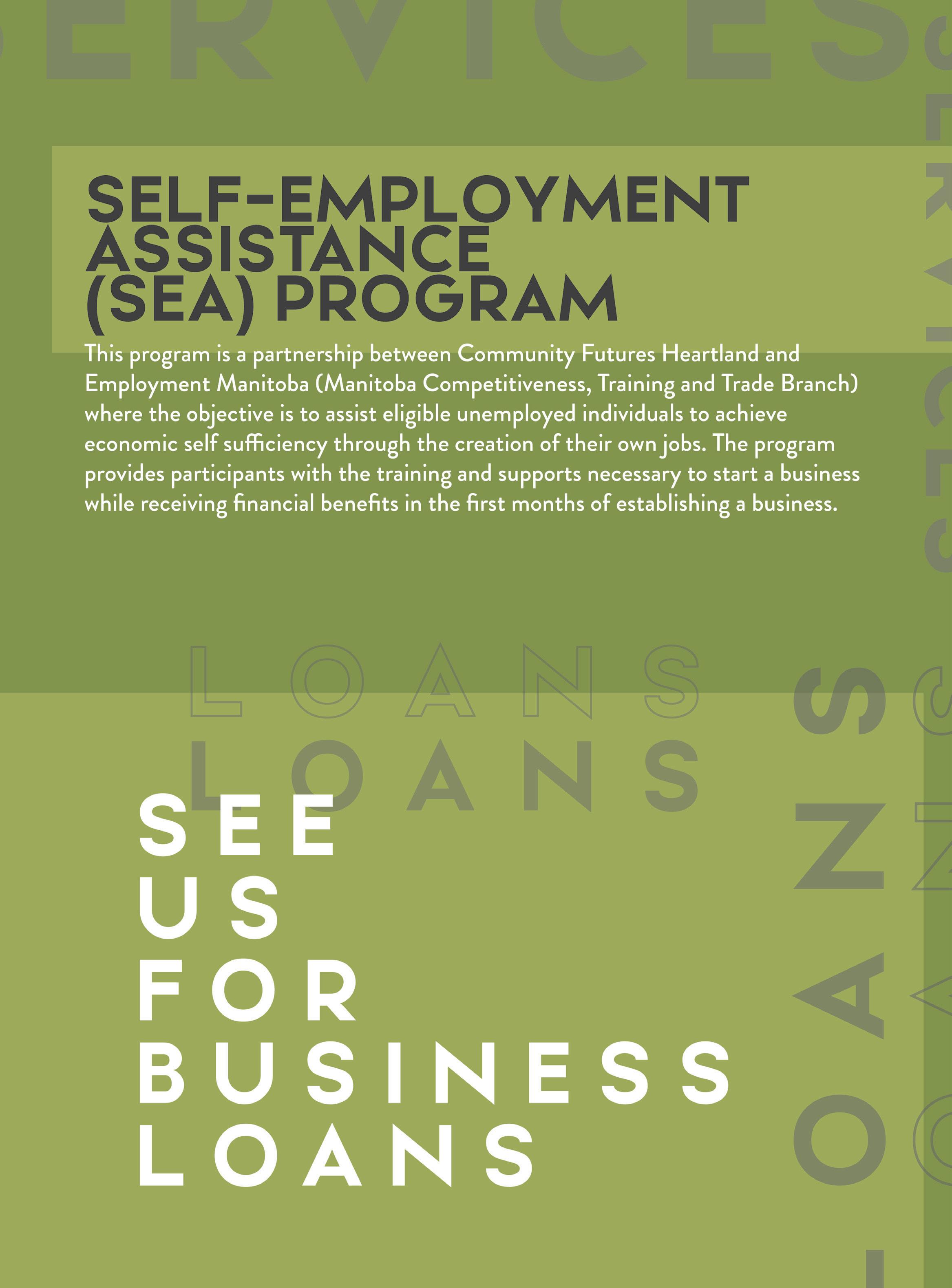
16 minute read
WORD OF MOUTH
WORD Mouth of
TREATMENT CHECKING YOUR GUMS
The good news is that gum disease can be prevented with good oral hygiene. Brush your teeth twice a day for a least 2 minutes – in the morning and before bed-- and floss at least once a day to remove the plaque. Flossing before you brush allows you to clean away the loosened food particles.
See your dentist and dental hygienist regularly for checkups and cleanings, usually every six to twelve months. Every time you have a dental examination, your dentist is looking for signs of gum disease. In the early stages, you likely won’t experience any symptoms but your dentist will have ways to detect the warning signals.
A tool called a periodontal probe can measure the depth where your gums attach to your teeth. Healthy gums attach to teeth just below the edge of the gum. If your gums attach to your teeth below this point, it is a sign of gum disease. Another tool your dentist can use is an x-ray which can identify diseases that can not be seen by a visual dental examination. If your gum disease is advanced, your dentist may refer you to a specialist called a periodontist. A periodontist specializes in restoring or regenerating lost bone and gum tissue. Check your gums on a regular basis for these signs of gum disease: • a change in the colour of your gums • gums that are red around your teeth • gums that bleed every time you brush or floss • bad breath that will not go away • a taste of metal in your mouth • shiny, puffy or sore gums • teeth that are sensitive for no reason If you are experiencing these symptoms, it would be a great idea to make an appointment with your dentist right away.

WORD
REBECCA DYCK editor
It is December but it doesn’t feel like December. Consecutive days of plus temperatures bless us with their presence. Christmas is approaching but it doesn’t feel like Christmas. Unlike the welcome weather, there is a very unwelcome presence lingering in the air. Do I even need to say it if everyone already knows what I’m talking about? Maybe you’re like me and you would rather jump in a sub-zero lake than listen to one more person say “we’re all in this together.” Maybe that statement is true to a point, but no one’s experience through this has been the same, everyone is dealing with their own unique challenges and struggles. Maybe it doesn’t feel like Christmas because we need to re-evaluate what Christmas should feel like.
It feels as though everything we love about this season has been stripped away. The hustle and bustle of shopping for the perfect gift, dressing up for holiday parties with friends and co-workers, baking cookies with grandma, and the list could go on. To quote everybody’s favourite green Christmas character, the Grinch (the real one . . . not the one you’re thinking) “What if Christmas, perhaps, means a little bit more?” There is still cause for joy, there is still cause for hope, and most importantly – if you share my beliefs – there is still cause to celebrate the birth of our Saviour, Jesus Christ. What is left then, is Christmas, in its truest and purest form.
As we compiled this issue, we sympathized with the many small businesses that were forced to close their doors for the second time in less than a year. We are again witnessing the strength and resiliency of our community. Business owners scrambling to find options for their customers. Community members promoting shop local. Many people vowing to avoid Amazon and big box stores to keep their dollars in their towns and cities. Whether the businesses within these pages have been deemed essential during this time or not, they are all doing the best they can, and they are all so vitally important to the Pembina Valley. Go out of your way to support your favourite local businesses during this difficult season, they’ll appreciate it more than you know.
Alejandro Penner
design lead photography
Ryan Wall
writer
Tony Wall
graphic design
Mackenzie Friesen
photography
Ryan Bueckert
graphic design
Kevin Friesen
sales
LIFE IN THE VALLEY
IS PUBLISHED BY SERIOUS MARKETING
admin@seriousmarketing.ca
204.325.0283
Carpentry

244 Cochlan Dr., Morden • 204.822.1234
ENS QUALITY SEED
If asked about the basics of farming, almost everyone would have a general understanding of what needs to happen in order to end up with food at the end of the year. The soil is cultivated, the seed is planted, and the crops are harvested in the fall. It seems like a simple enough process. But what if that was only half the story when it came to how our food is grown? Chris Ens and Jake Friesen are the owners of Ens Quality Seed, a local seed company born out of the family farm, which has been supplying the area with seed for almost eighty years. This is their story of how they came to take on this important role in the farming community and an inside look at how seed is grown and developed over the course of many years.
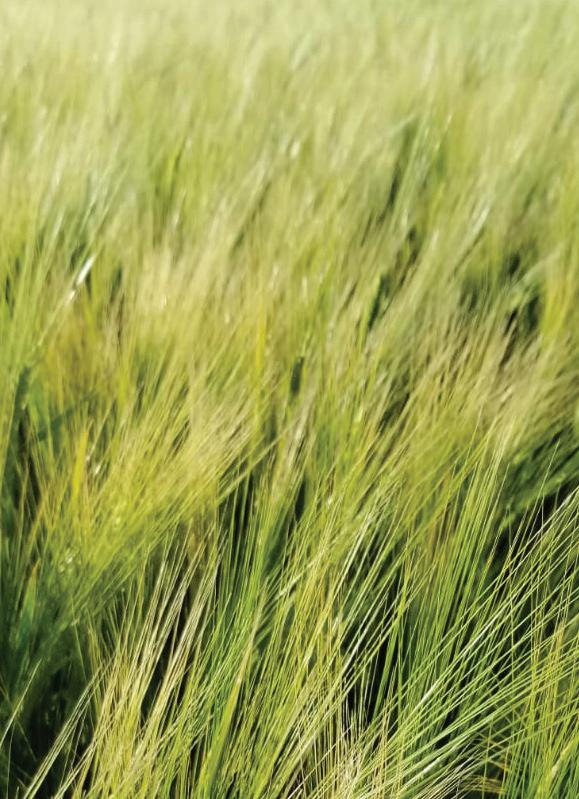
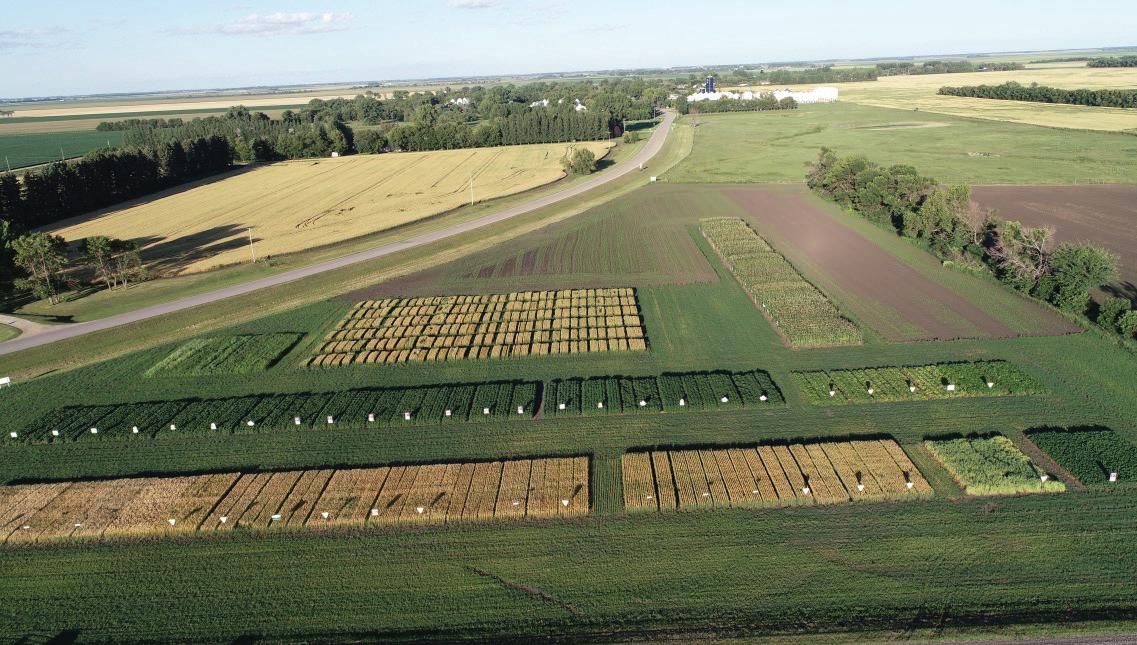

“When we tell people that we grow seed, most people just glaze over” said Chris, who is aware that his profession is a complicated process to understand. “We get our initial seed from a plant breeder who has developed certain varieties of seed within a type of crop. The varieties have their strengths and weaknesses taken into consideration for the conditions that it will be grown in.” Before they get the seed, it has already gone through years of development. The plant breeder starts with two seeds, which show strong characteristics for the specific growing conditions, and multiplies them up to eight generations. The breeder only picks out the offspring with the exact desired outcome to continue on in the multiplication process. Certain positive qualities that are looked at when breeding a crop would include achieving a larger yield, higher nutrition levels, and resistance to disease. While plant breeding might sound like modern age technology to some, it’s actually a practice that goes back thousands of years and has been a key part in planting sustainable crops throughout history.
“We buy a small amount of breeder seed and start by planting a two acre field” said Chris, as this is the start of the refining process. Throughout the summer, they will continually walk the rows, removing any off-types or impurities that come up. At the end of the year when the crop is harvested, the seed is removed for next year, allowing them to now plant one hundred and sixty acres with the multiplied seed. Chris says that the process of inspecting the rows is then repeated on this larger scale, with a continued focus on refinement. “If you’ve done the first two years diligently enough, you save yourself a lot of work in the next two years” he said, stressing the importance of removing every impurity that doesn’t belong in the field. The final two years of seed growing are mainly focused on increasing the volume, in order to sell at a larger scale. After the final harvest, the seed is thoroughly cleaned in their onsite facilities and is finally ready to be sold. At this point the seed has been inspected and marked as a certified status, assuring that all quality requirements are met, giving the customer exactly the seed they would be expecting. After many years of hard work, a generation of seed is ready to be planted.
The story of their business begins when the Ens family moved to southern Manitoba in 1923, settling just south of Winkler in the village of Reinland. They operated a typical mixed farm for the time, and after coming out of the difficult decade of the 1930’s, they decided to branch out further and diversify by starting to grow and supply seed. This would add a unique value to the farm as they would be one of the few operations in the area that was meeting this need. Over the years, they have grown a wide variety of seed such as wheat, barley, oats, flax, peas, sunflower seeds, soybean, and various dry beans. As the seed production grew, it placed them in the unique role of sustaining farms and crops in the area, leading them to build their first official seed cleaning facility in 1957. Seven years later, the Ens farm would branch out again, this time taking on the challenge of building and operating a dairy enterprise. In 1967, the farm was incorporated as Ens Farms Limited, which would see Chris’ father Abe, and his ten siblings receive shares in the business. Abe and his brother Armin would eventually take over, with Armin overseeing the dairy production while Abe was in charge of the crops and growing seed.
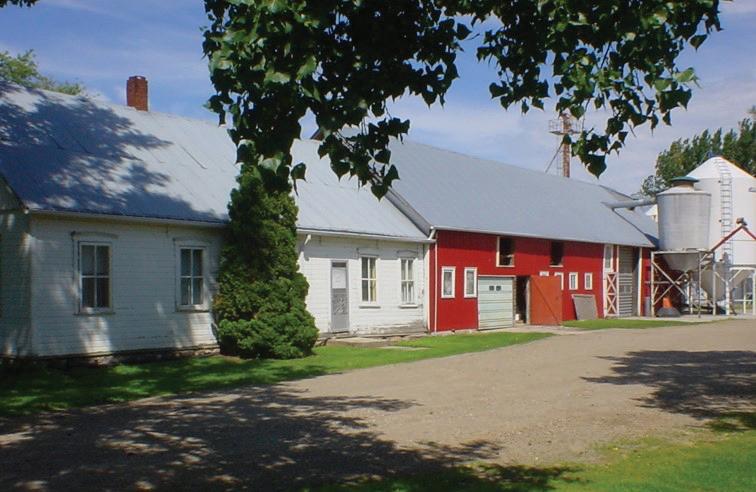
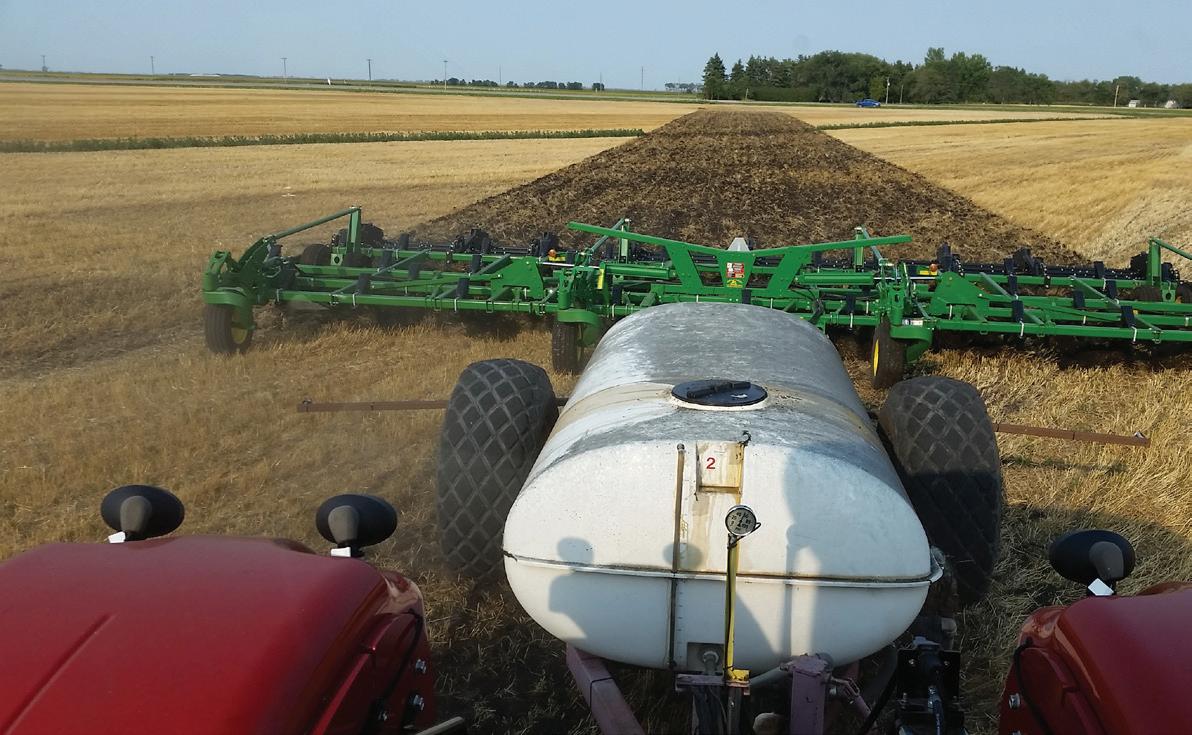
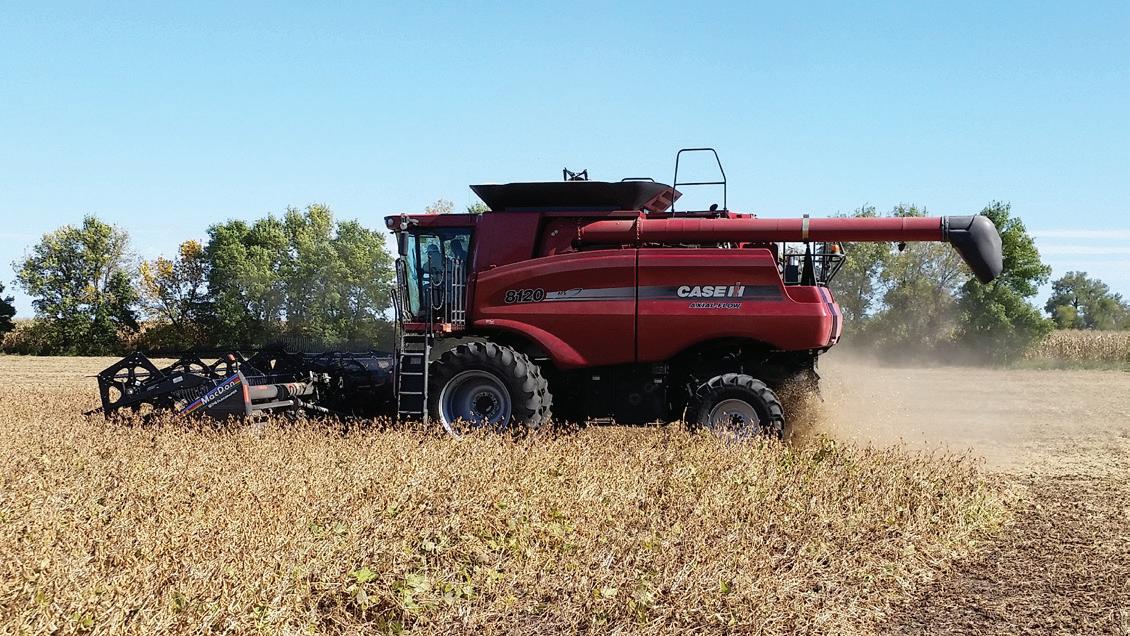
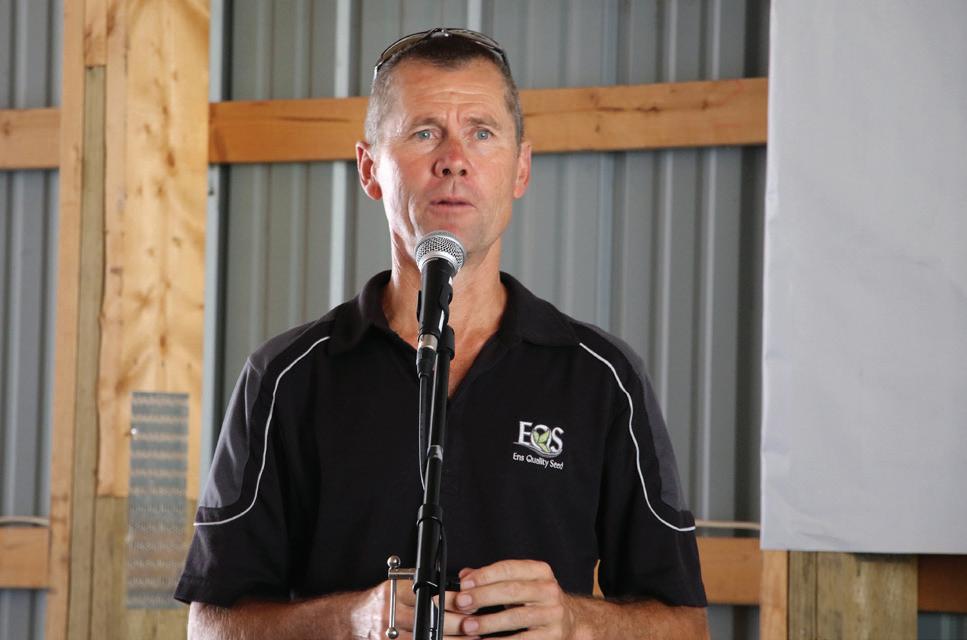

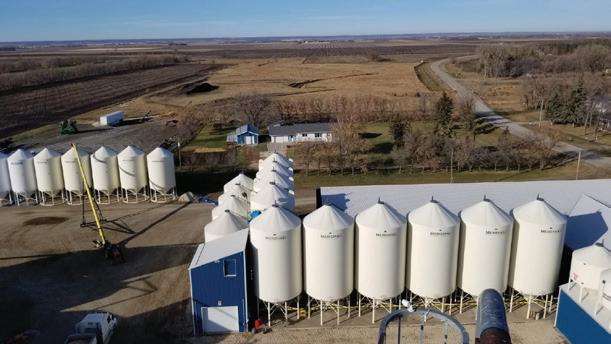
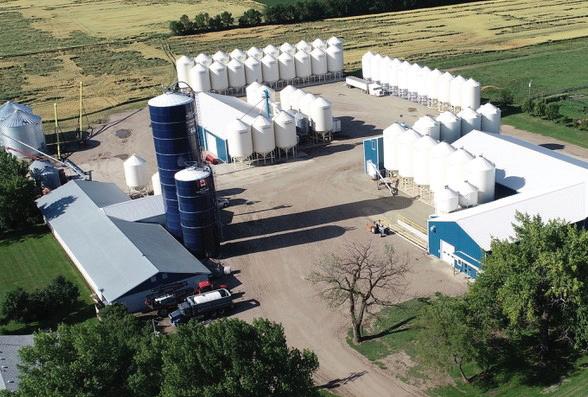





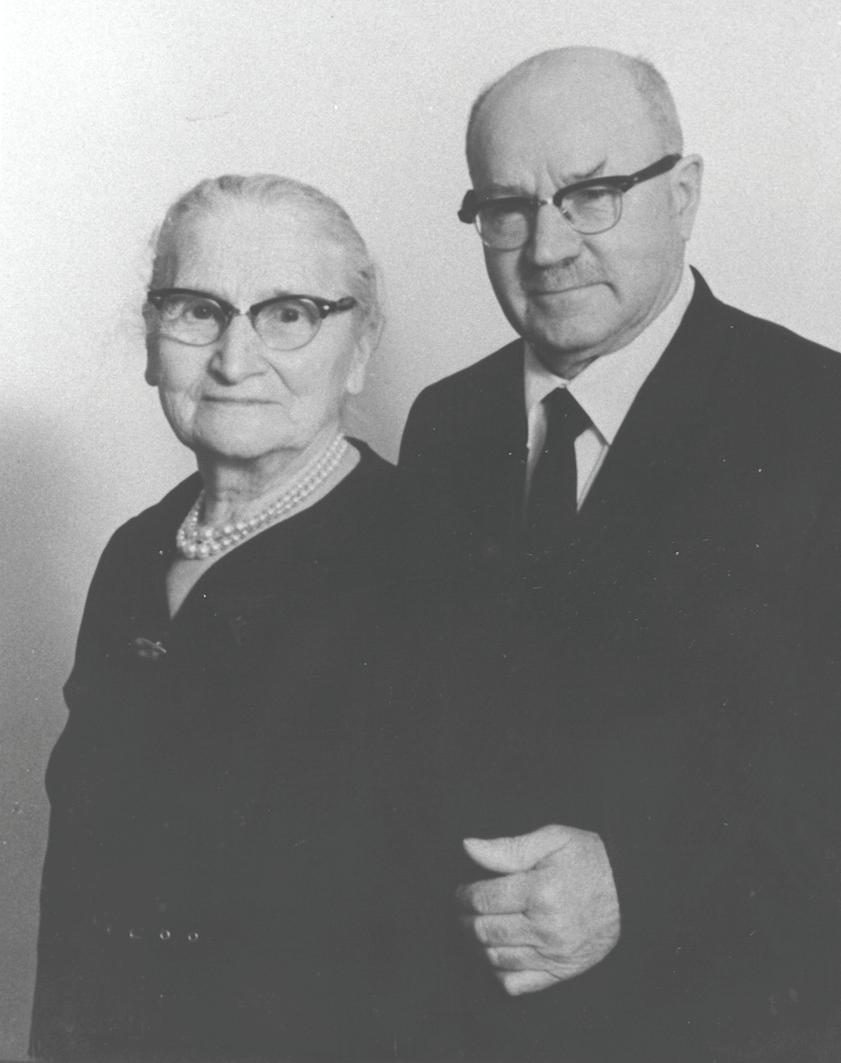
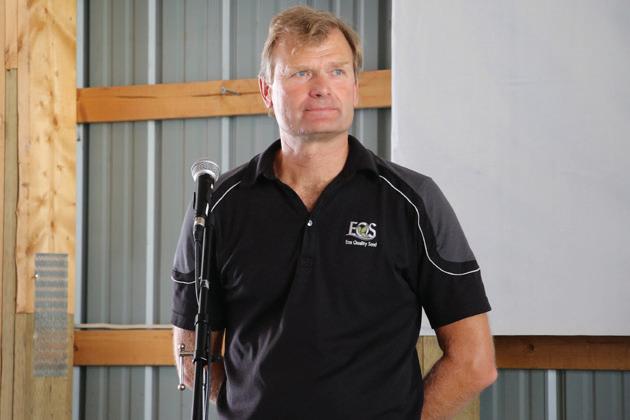
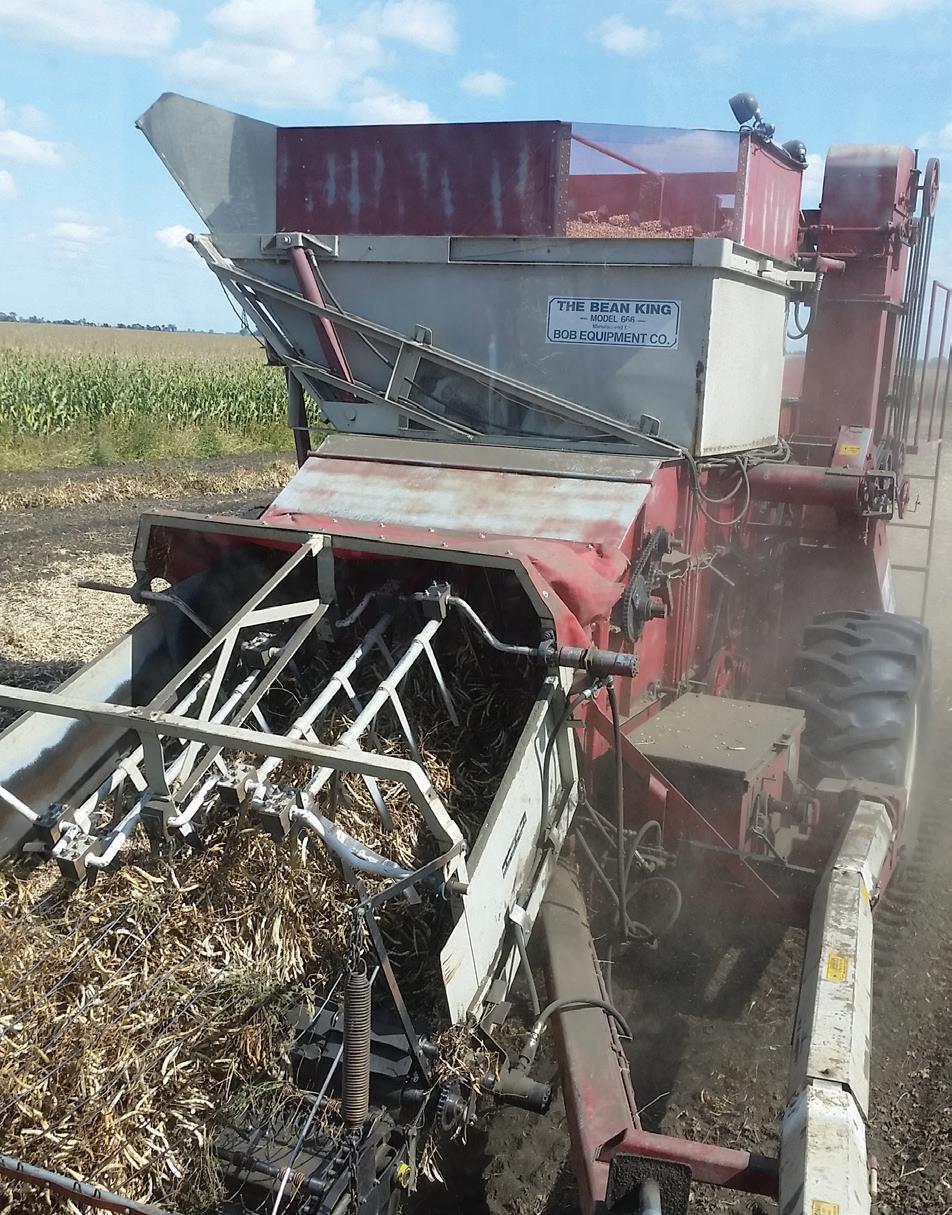


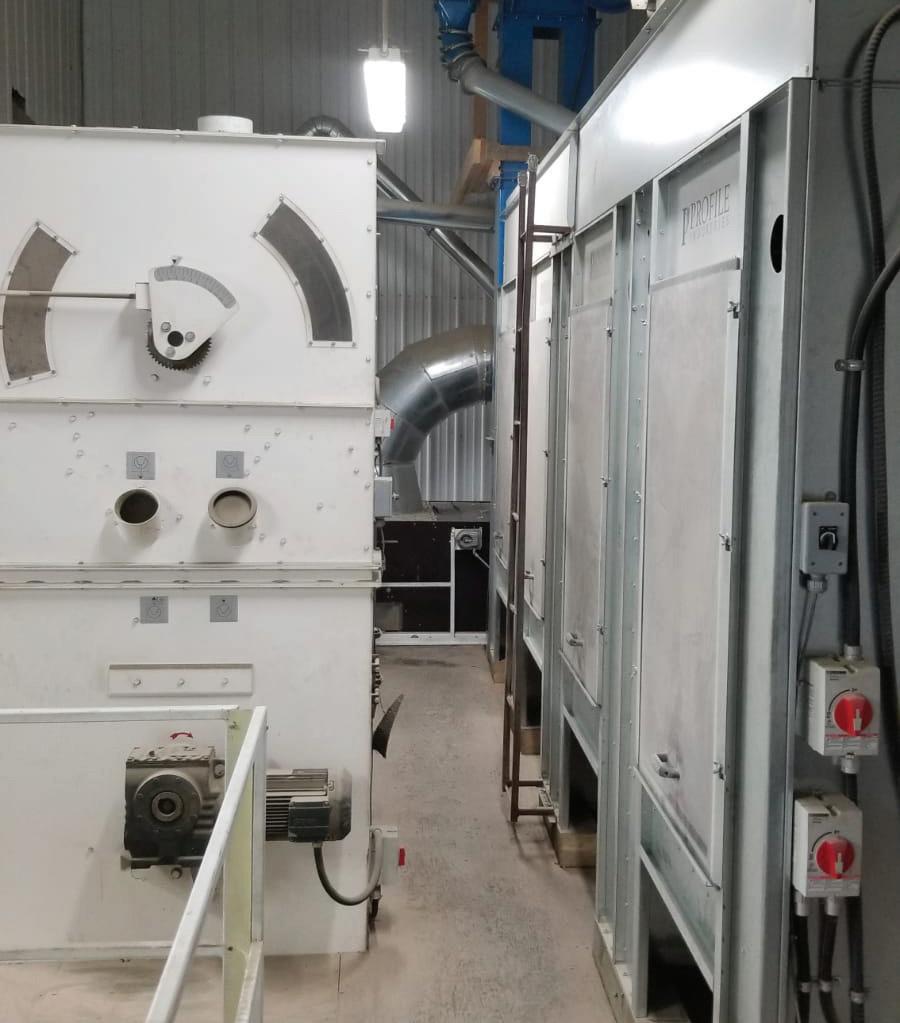
Chris recalls growing up on the farm, where life revolved around farming. “It was 24/7 lifestyle” he said, “milking cows throughout the year and farming in the summer.” Chris also clearly remembers the major challenge their farm faced in 1984 when their dairy barn burned to the ground. The Ens family witnessed what kind of community they had around them as friends, family and neighbours immediately came to help with both the clean-up and rebuilding process. “Looking back, it’s amazing to think of how the community stepped up to support and help us continue” said Chris. “There was even a neighbouring dairy farm that took in our herd of cows which allowed us to keep operating.”
In high school, Chris would develop a love for drafting and design which led him to further his education and get a job in this field. “I had been working in the profession for a few years, but I couldn’t shake the desire to return to the farm” he said. The farming blood was still in him and after eight years of pursuing a career in drafting, he realized that farming is what he really wanted to do.
Chris and his brother-in-law, Jake Friesen worked together under Abe and Armin, further learning the intricacies of the trade as well as life lessons along the way. Jake recalls an impactful experience he had soon after starting the job, where Abe pulled up in his newly acquired Pontiac Parisienne. He had heard about a mechanical problem that Jake was dealing with and told him to get in the car so they could get what was needed. “I wanted to at least peel off my coveralls first, but he wouldn’t have it. He responded by saying, “I have never yet bought an idol and I have no intentions of ever having one. Get in!” Jake was able to see that Abe’s success had never gone to his head, while also leaving behind an example of dedication and humility to be followed. It has now been thirty years since Jake was given a job on the farm, and he can look back at how fortunate he has been to be given this opportunity. “I came here from Belize with no farming experience at all” he said. “I would have never expected in my wildest dreams to be doing what I am doing now.”
The turn of the millennium saw numerous changes within the business, as Chris and his wife Karen along with Jake and his wife Ingrid took over the day to day operations of the business. They had sold their milking cows and the dairy equipment a few years earlier with the support of Abe and Armin, and had since put a greater focus and energy on seed production. They soon outgrew their operation and were forced to build a second seed processing plant. A couple years later they established a second company alongside Ens Farms Ltd., which was called Ens Quality Seed. This was to clearly differentiate the farming activity going on from the seed production business.
The business continued to grow, and was helped by the re-emergence and demand for soybeans, starting in the early 2000’s. For a number of years, Ens Quality Seed had developed a way to grow and process very fragile seeds in the form of a variety of dry beans. “Handling fragile seed is what we had based our business on” said Chris, “because of this, there was a seamless integration when we added soybeans.” With soybean seed also being very fragile, the experience Chris and the team had acquired would allow them to thrive in the new market. This continued growth prompted the need for a third plant, which was built in 2013.
Part of the success at Ens Quality Seed has been their commitment in searching out the next great crop that will be in demand, and to be at the forefront in having the seed ready for their customers. This is especially important due to the length of time that any type of seed needs in order to be ready for large scale planting. “In our business, we’re always looking for the next new crop that will be in demand” explained Chris. This also includes continuous experimentation to discover what works for the specific climate, in order to offer new options for farmers to add to their rotation.
While the farm might look different than when it started out almost one hundred years ago, the dream of offering quality seed to their fellow farmers is alive and well, and with it has come many valuable lessons learned.“Since taking over the farm and seed business, the years haven’t always been easy” said Chris, “but along the way, we have seen and witnessed God’s hand at work in the path that he’s laid out for us.” The owners of Ens Quality Seed attribute so much of their success to the tremendous support of their customers and their incredible staff who have helped the business grow, develop, and thrive.
Along with supplying many local farms within a fifty kilometre radius of Winkler, the company also ships their seed all over the country, as far west as Alberta and as far east as Prince Edward Island.
PHYSIO ALL I WANT FOR CHRISTMAS... FACT
IS A BRAND NEW KNEE
Total knee arthroplasty (TKA), also known as total knee replacement, is one of the most performed orthopedic procedures worldwide. In Canada alone, the number of people having joint replacements has increased 22.5% over the past 5 years with more than 75,000 surgeries now performed annually1. In 2019, a total of 2,798 knee replacements surgeries were performed in Manitoba2!
What is a total knee arthroplasty (TKA)?
TKA is a surgical procedure which consists of resecting or “cutting away” the damaged bone and cartilage from the thighbone, shinbone and knee cap. This is followed by replacing it with an artificial joint or prosthesis made of metal alloys, high-grade plastics and polymers. For the properly selected patient, the procedure results in pain relief as well as improved function and quality of life.
When is a TKA performed?
Generally, TKA is performed because the joint has been worn away by osteoarthritis, rheumatoid arthritis, inflammatory arthritis, or post-traumatic degenerative joint changes. Osteoarthritis is the most common type of arthritis in adults and fittingly over 99.3% percent of TKA’s in Canada are performed for osteoarthritis1! When this joint destruction progresses, pain is often the main complaint of individuals with degenerated knee joints. Initially, pain is felt during activity and dissipates after several minutes of rest. When the joint degeneration advances, the pain can also occur during rest periods significantly affecting sleep at night. Corresponding with this advancement, increased complaints of knee “stiffness” and crepitus or “grinding” are noted. Intensifying pain and stiffness lead to a decline in function. It is often manifested as reduced exercise tolerance, difficulty climbing stairs or slopes, reduced walking speed and increased risk of falls. It is then after exhaustion of appropriate nonsurgical therapies (such as physiotherapy) and extensive discussion of the risks, benefits, and alternatives – a TKA may be pursued by a medical professional. In determining whether a TKA is the best course of action for an individual, an orthopedic surgeon assesses knee range of motion, stability and strength. X-ray imaging may also assist in determining the extent of damage to the joint.
Does physiotherapy occur before a TKA?
Pre surgical physiotherapy aims to enhance the functional capacity of an individual in order to optimize the success of their surgical procedure. Often this intervention consists of education, “hands on” techniques and home-based exercise prescription. Research has illustrated that physiotherapy prior to TKA has been linked to reduced immediate post-operative pain and reduced pre and post-operative anxiety.

Does physiotherapy occur after a TKA?
Within a span of 24 hours, after surgery a physiotherapist begins helping the individual utilize their artificial knee. The physiotherapist and health care team provide the individual with exercises to strengthen the muscles that surround the knee and get things moving. This immediate post-surgical intervention has been shown to reduce length of hospital stay and post-operative complications! However, the benefits of moving under physiotherapists’ direction only continues to grow after discharge from the hospital! Such participation has been proven to reduce post-operative complications, such as muscle weakness and deconditioning. It also has been linked with quicker achievement of milestones, such as greater knee range of motion, improved muscle strength, higher walking and balance scores.
So, when making your Christmas wish list and checking it twice before your operative procedure – be sure to add seeing your local physiotherapist!
References: 1. Canadian Institute of Health Information. “Hip and Knee Replacements in Canada: CJRR Annual Report.” CIHI, August 27, 2020. https://www.cihi.ca/en/hip-and-knee-replacements-in-canada-cjrr-annual-report. 2. Health, Manitoba. “Knee Replacement Wait Time Information: Province of Manitoba.” Province of Manitoba - Health, Seniors and Active Living. Province of Manitoba, September 2020. https://www.gov.mb.ca/health/waittime/surgical/knee.html. 3. “Joint Arthroplasty: The Value of Physiotherapy.” Canadian Physiotherapy Association. Canadian Physiotherapy Association. Accessed November 2020. https://physiotherapy.ca/sites/default/files/ valuePT/cpa_valuept_jointarthroplasty-en.pdf. 4. Joice, Melvin G., Subhrojyoti Bhowmick, and Derek F. Amanatullah. “Perioperative physiotherapy in total knee arthroplasty.” Orthopedics 40, no. 5 (2017): e765-e773.
Stacey Braun (Physiotherapist, MPT, B.Sc, ASc)
Presented by
pembinavalleyphysio.com




